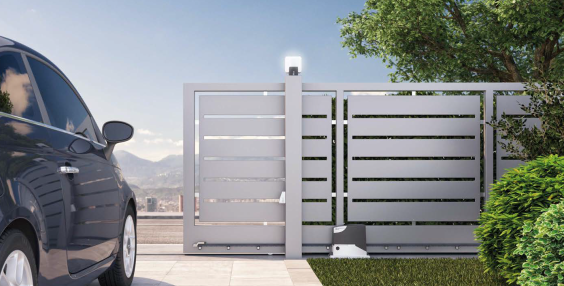
Ready to elevate your detection game? Meet the ASO Lisens Radar scan
Smarter and sleeker alternative to traditional ground loops and photocells! Take a closer look. No digging. No wiring. No hassles.

Find out how gate photocells work and why they’re important in gate automation.
The gate automation specialists at Rolling Center share how electric gate photocells work, why they’re an important part of any electric gate set up and what to look out for when purchasing photocells.
Photocells are designed to keep vehicles (and people) safe when using automated electric gates.
They tend to use infra-red technology to tell them when something is in the way, helping to avoid nasty accidents or vehicle damage by forcing the automation to stop when there is a blockage detected.
This makes photocells a crucial part of any gate automation set up.
Photocell setup varies depending on the manufacturer, however there are some key things to look out for when purchasing photocells for your electric gate set up.
Range
Ensure the photocell range is adequate enough for your gate area, so that it can effectively transmit the data from the photocell to your gate automation system.
Technology
Sunlight interference can limit your gate photocell’s ability to operate correctly, but many come with in-built technology to limit this interference, such as the Nice EMP outdoor pair.
Size & adjustability
The size and how adjustable your photocells are can impact installation flexibility.
Resistance & durability
Some photocells come with weather resistant technology and are even burglar-resistant with metal shells, to avoid the owner having to get an expensive replacement.
If you need help choosing a photocell solution that works for your needs, speak to our helpful team or browse our gate photocell range today.

Smarter and sleeker alternative to traditional ground loops and photocells! Take a closer look. No digging. No wiring. No hassles.

Trade Professionals – Unlock Smart Access with Akuvox! Rolling Center is an official nationwide distributor for the full Akuvox range

The iconic Robus 600kg sliding gate motor for residential gates has undergone a makeover. The sleek, modern casing ensures your